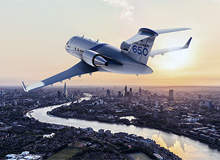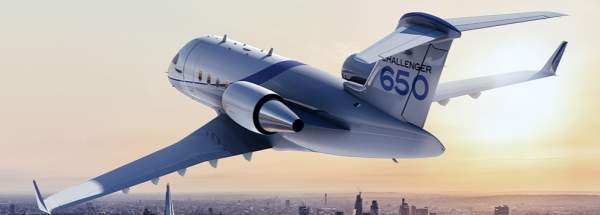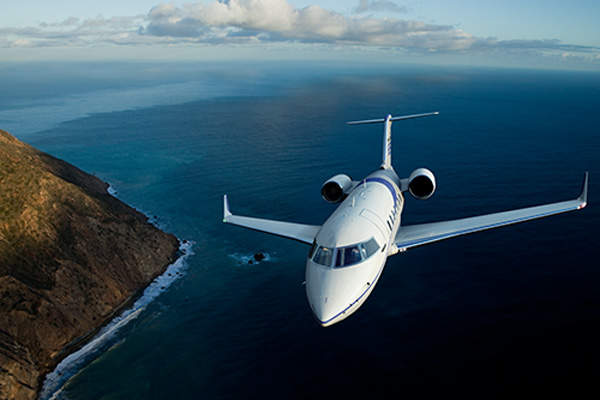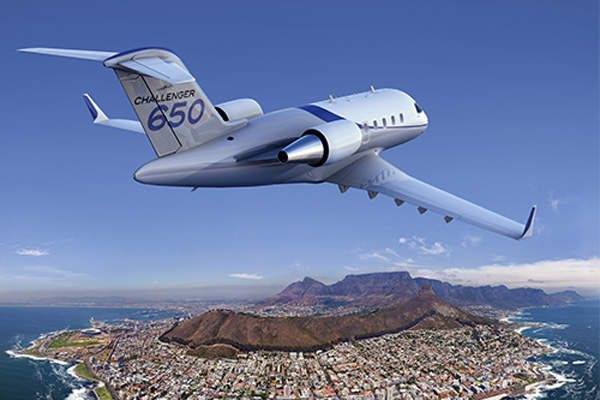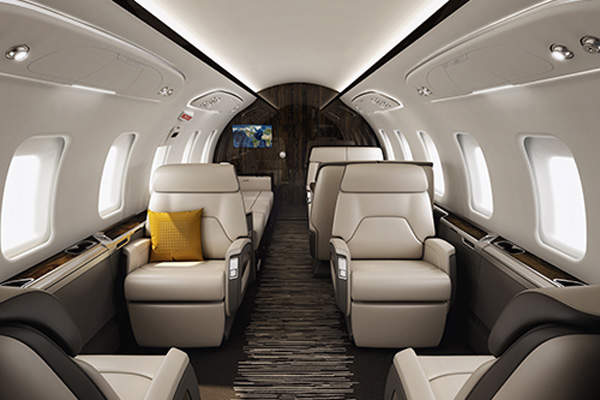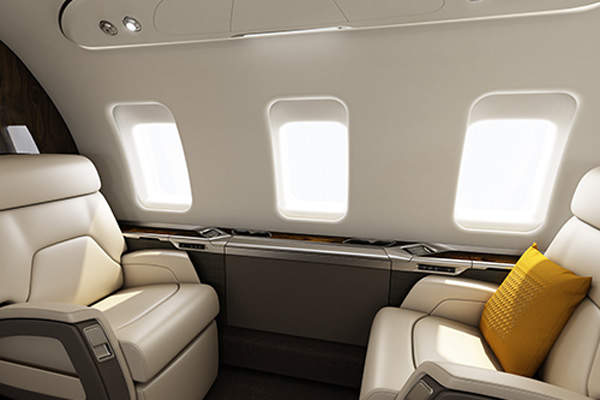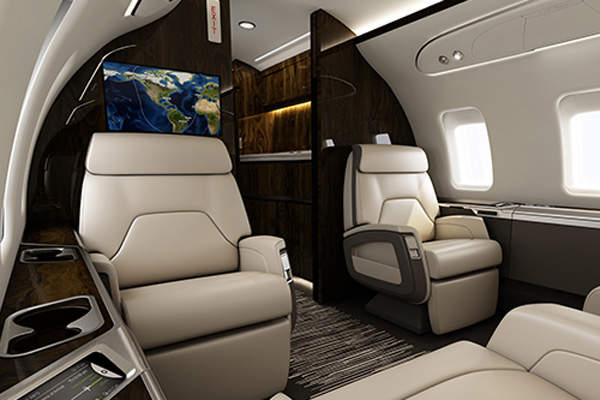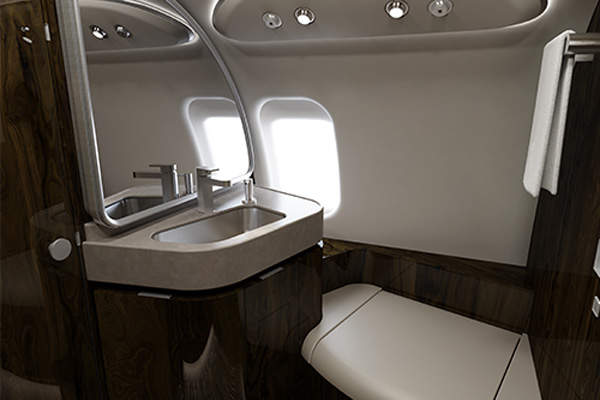The Challenger 650 is a new business jet in the Challenger family of business jets developed by Bombardier Aerospace. The aircraft was officially launched at the National Business Aviation Conference and Exhibition (NBAA) held in Orlando, Florida, US, in October 2014.
Bombardier launched the aircraft with its official partner NetJets, which placed an order in June 2012 for 25 Challenger 650 jets with an option for 50 additional aircraft. The aircraft entered into service with NetJets in November 2015.
The Challenger 650 obtained Transport Canada (TC) certification in November 2015, while the European Aviation Safety Agency (EASA) type certification was accredited in March 2016.
Challenger 650 design features
The aircraft’s design was inspired by the design and ergonomics of Challenger 350 business jet. The new jet features breakthrough design attributes and unique expressions of comfort, control and connectivity, including redesigned seats and galley, advanced cabin management system, largest-in-class HD monitors, Bluetooth integration, and audio-video on demand.
The Challenger 650 has a total wing area of 45.4m², wingspan of 19.6m, length of 20.9m and height of 6.3m. The maximum take-off weight of the jet is 21,863kg and maximum payload carrying capacity is 2,200kg. In its standard configuration, the jet accommodates ten passengers.
Flight deck and avionics
The flight deck of Challenger 650 is designed to perfectly blend the cockpit and cabin providing optimal comfort and control to the pilots. The cockpit features a synthetic vision system (SVS) and advanced avionics suite, equipped with the latest navigation, communication and surveillance architecture, supporting FAA Next Gen and SESAR emerging requirements.
A new flight management system (FMS) is incorporated with increased memory size and high upload-speed capability. It provides the basic required navigation performance of 0.3nm as well as localiser performance with vertical guidance.
The flight deck also features Multiscan™ weather radar that prevents misinterpretation and guides pilots by reporting clear weather situations, reducing workload and ensuring smoother travel.
The head-up display (HUD) and enhanced vision system (EVS) offer maximum operational flexibility and enhanced situational awareness, allowing pilots to reach lower decision heights on the final approach and providing improved access to airports in adverse weather conditions.
The aircraft also features Smart Runway™ and Smart Landing™ options, which help the pilots during the critical phases of flight such as landing, take-off, approach and ground operations.
The aircraft also includes Fans of 1/A+ capability (CPDLC & ADS-C) to ensure more efficient air traffic control in oceanic and remote areas, steep approach capability to access additional runways and RNP AR 0.3nm to enable faster landing clearance, shorter approach routes and fuel savings.
Challenger 650 cabin
The Challenger 650 has the widest cabin in its class, offering a width of 2.41m, length of 7.8m, height of 1.83m and floor-line width of 2.11m.
The cabin can accommodate up to 12 passengers and offers stand-up headroom, larger seats, extra legroom and a flat floor throughout.
Bombardier offers its customers an option to choose from four different cabin floor plans with various seating and washroom arrangements.
The first executive floor plan is a ten-passenger configuration with an extended passenger compartment. It features a four-seat divan in the forward compartment and two facing club seats in the rear compartment.
The second executive floor plan is a 12-passenger configuration with an extended passenger compartment and features club seating in the forward compartment and a four-seat divan and conference table in the aft compartment.
The third plan, also a ten-passenger configuration, offers club seating in the forward compartment, while the aft compartment features a four-seat divan and two facing club seats. The plan also incorporates an extended washroom compartment, which can double as a full-size changing room.
The fourth executive floor plan is a 12-passenger configuration with club seating in the front compartment, as well as a four-seat divan with a conference table in the aft compartment. The washroom in this plan can also double as a full-size changing room.
The next-generation cabin management system (CMS) designed by Lufthansa Technik provides passengers with office-like control, productivity and entertainment capabilities.
The cabin is fully equipped with a multimedia system which allows passengers to store and play media. Passengers can access the content on their devices by connecting them to other portable devices using USB, HDMI, Bluetooth and other ports. The cabin also features two 24in bulkhead monitors for entertainment and information display.
The new angled side-ledge provides easy and instant access to passenger control units (PCU) such as light intensity, volume, flight attendant call, browsing of personal settings, distribution of audio / video content and other media. The PCUs use touchscreen technology, providing easy-to-access buttons.
Engine details of the new Challenger-class business jet
The Challenger 650 is powered by two CF34-3B MTO engines developed by GE Aviation. The engine delivers higher take-off thrust, shorter take-off distance, extra payload capacity, greater range capabilities, and reduced maintenance operations. Each engine generates a maximum take-off thrust of 9,220lbf (41kN), allowing the aircraft to fly from shorter runways.
Challenger 650 performance
The Challenger 650 has a range of 7,408km and can fly at a maximum speed of 870km/h. It can fly non-stop from London to New York, Dubai to London, and Sao Paulo to Miami.
The aircraft requires a take-off distance of 1,720m and landing distance of 846m. Its maximum operating altitude is 12,497m.
Orders and deliveries
Swiss Air-Ambulance Rega signed an agreement with Bombardier for three Challenger 650 aircraft in April 2015. Deliveries were expected in 2018.

